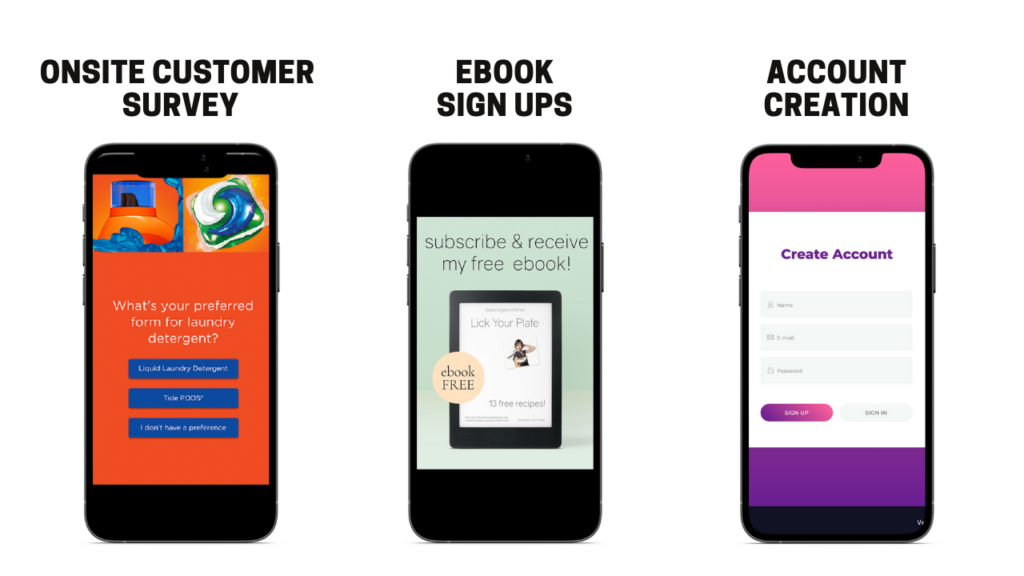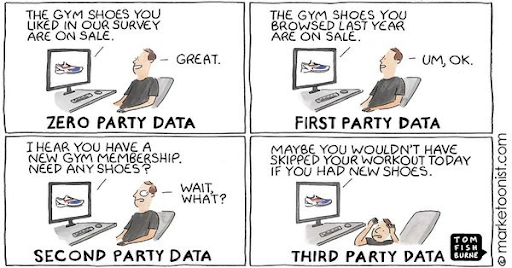Zero-Party Data may sound like the disappointing result of a Facebook event no one has responded to, but it is so much more than that!
Although talked about far less than first, second, and third party data, zero-party data can provide you with incredibly reliable and actionable consumer data you can use for retargeting, email lists, and more!
So, What is Zero-Party Data?
One of the reasons zero-party data may be a little known concept is likely due to its similarities with first-party data. The two are nearly identical, but with a few major differences.
The term was originally spread by Forrester Research to separate the types of data users intentionally give to a company or brand.
Both zero-party data and first-party data can be collected through similar means such as email list sign up forms, surveys, and customer feedback, but first-party data also can be collected using website and app analytics whereas zero-party data really cannot.
This is because when it comes to zero-party data it’s all about the specifics!
With zero-party data, consumers can provide data more in line with their specific interests and intentions such as purchase intentions, communication preferences, and how they would like to define their relationship to the website or brand moving forward.
What are they interested in learning more about?
How would they like to receive this information and how often?
Is receiving customized product recommendations something they would like to opt into?

Data such as this is essentially what zero-party data is all about and it may help you create more valuable campaigns than you would with other types of consumer data. It is especially relevant to direct-to-consumer brands hoping to cultivate customer loyalty. And with six out of ten Americans purchasing from a DTC brand in 2021, there has never been a better time to start collecting zero-party data to drive repeat purchases.
Why is Zero-Party Data Important?
One major qualifier for zero-party data is that it must be given by the consumer intentionally. Although many forms of first-party data are given intentionally, others are not. This intentionality is crucial for brands to cultivate trust with their consumers which is more important today than ever before.
The trends of modern day consumers are always in flux, but there has been a steadfast prioritization of privacy over relevancy. We see this trend reflected in many advertising platforms as they continue to phase out third-party cookies, some banning them entirely.
Taking this in mind, if a user intentionally opts in to giving a brand specific information about their communication preferences and shopping habits, this can result in reliable data you have collected with their permission. The value of zero-party data in this age cannot be understated.
How to Collect and Implement Zero-Party Data
As we’ve said, zero-party data can be collected in many of the same ways as you would collect first-party data. However, the best way to do this may be to offer the consumer something of value in exchange. This could be discounts, ebooks, newsletter sign ups, customized product recommendations, or anything else worthy of a direct interaction where the consumer will give you more personalized data.

Email Marketing
One way to implement this data is through email marketing. You can use the information you’ve gathered to cross-sell to your consumers based on their shopping habits and product preferences. Since they have intentionally given you this data and opted in to communication from your brand, they will be less likely to leave any promotional emails unread as opposed to unsolicited promotions.
Social Media Retargeting
You can also use this information for targeted social media ads such as using Facebook’s custom audience tool to import your zero-party data and even creating a lookalike audience to expand to other consumers with similar interests.

Still a relatively new classification for consumer data, zero-party data is slowly making its way into the marketing vernacular as it becomes more relevant for DTC brands than ever before. We will continue watching as people find new and innovative ways to collect this incredibly useful data!







